Aggressive granulomatosis (particle disease) left total hip prosthesis
Presentation
PH of bilateral total hip replacement, Recent minimal trauma to the left hip. Now left hip pain.
Patient Data
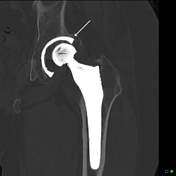

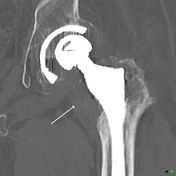
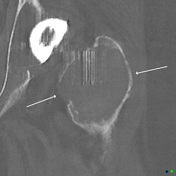
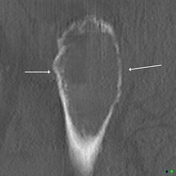
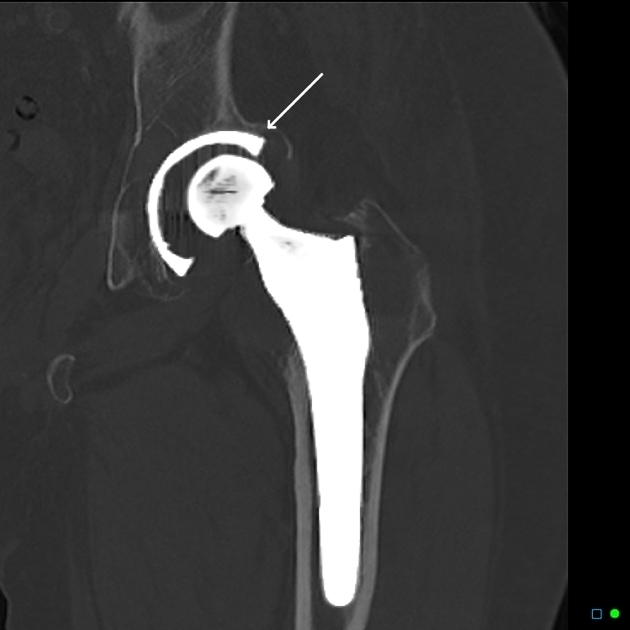
Assymetrical position of the femoral head within the acetabular cup is associated with marked expansion and bony lysis with a soft tissue mass around the upper portion of the femoral stem
Case Discussion
The lytic mass is throught to represent a foreign body granulomatous reaction containing histiocytes induced by the prosthesis causing bone expansion and erosion. The key to this case is the eccentricity of the femoral head in the acetabular cup indicating excessive liner wear. This liner is made of polyethylene and it is believed that small fragments or particles of the liner break off and enter the joint space, causing a foreign body reaction. It is not thought to be an infective process.




 Unable to process the form. Check for errors and try again.
Unable to process the form. Check for errors and try again.